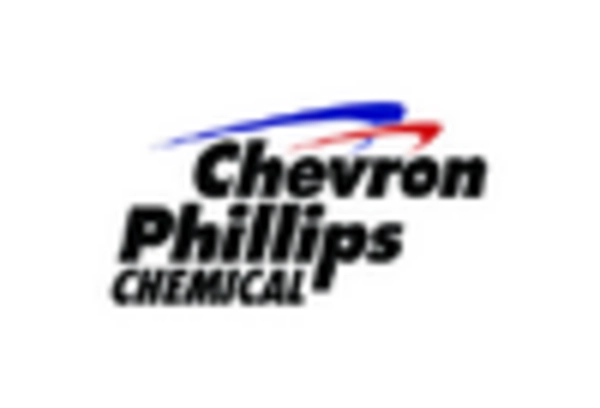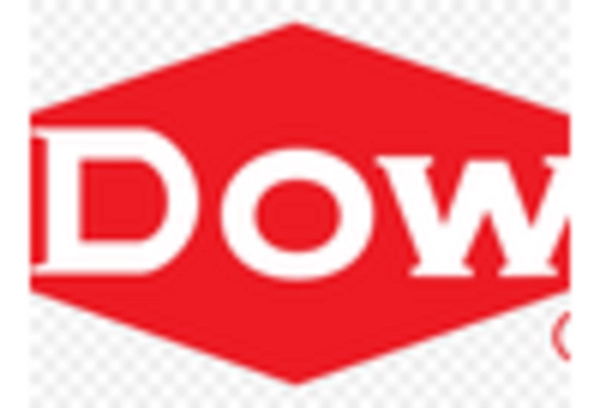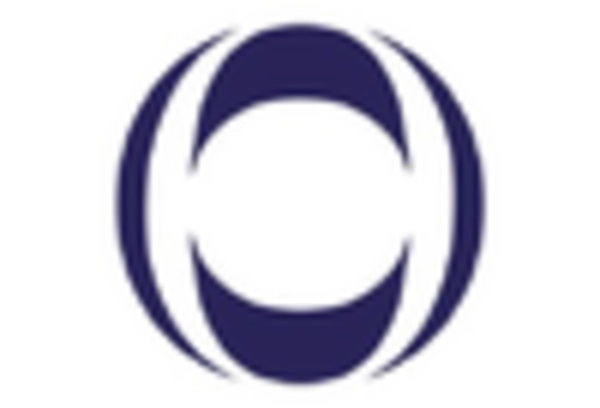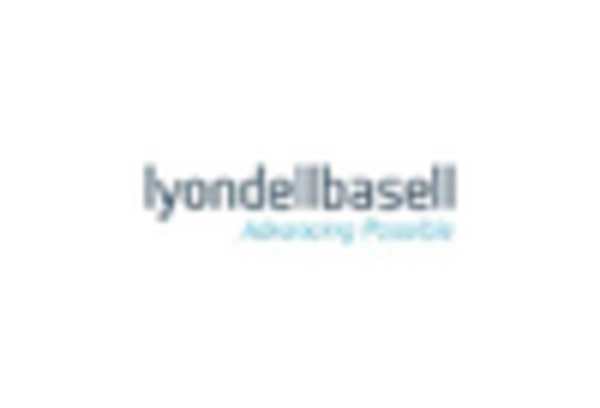Strategic Trade Agreements
Strategic trade agreements within the GCC and with external partners are likely to enhance the ethylene market. These agreements facilitate easier access to international markets, allowing GCC producers to export ethylene and its derivatives more efficiently. In 2025, the GCC is expected to see a 10% increase in ethylene exports due to favorable trade conditions. This expansion into new markets not only boosts revenue for local producers but also encourages investment in production facilities, thereby strengthening the overall ethylene market in the region.
Rising Demand for Petrochemicals
The ethylene market in the GCC is experiencing a notable surge in demand for petrochemicals, driven by the region's expanding industrial base. The GCC countries are increasingly focusing on diversifying their economies away from oil dependency, leading to a heightened need for ethylene derivatives in various sectors, including packaging, automotive, and construction. In 2025, the ethylene production capacity in the GCC is projected to reach approximately 30 million tonnes, reflecting a growth rate of around 5% annually. This rising demand for petrochemicals is likely to bolster the ethylene market, as manufacturers strive to meet the needs of both domestic and international markets.
Growing Focus on Renewable Energy
The GCC is increasingly prioritizing renewable energy sources, which indirectly influences the ethylene market. As countries in the region aim to reduce their carbon footprints, there is a growing interest in bio-based ethylene production methods. This shift towards sustainability may lead to the development of new technologies and processes that utilize renewable feedstocks, potentially reshaping the ethylene market landscape. By 2025, it is anticipated that renewable energy projects will account for approximately 20% of the total energy mix in the GCC, fostering innovation in the production of ethylene and its derivatives.
Technological Innovations in Production
Technological innovations in ethylene production processes are playing a crucial role in shaping the ethylene market in the GCC. Advances in catalytic processes and cracking technologies are enabling producers to enhance efficiency and reduce production costs. In 2025, it is projected that the implementation of these technologies could lead to a 15% reduction in energy consumption during ethylene production. This increased efficiency not only benefits producers but also contributes to a more sustainable ethylene market, as lower energy usage aligns with the region's environmental goals.
Investment in Infrastructure Development
Infrastructure development initiatives across the GCC are significantly impacting the ethylene market. Governments are investing heavily in projects such as transportation, housing, and industrial facilities, which require substantial amounts of ethylene-based materials. For instance, the construction sector in the GCC is expected to grow by 6% in 2025, further driving the demand for ethylene. This investment in infrastructure not only stimulates the local economy but also creates a robust market for ethylene derivatives, thereby enhancing the overall growth prospects of the ethylene market in the region.

















Leave a Comment